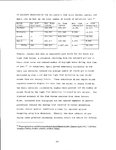wiking85
Staff Sergeant
https://en.wikipedia.org/wiki/Josef_Kammhuber
Assuming you have control over the German night defenses like Kammhuber starting in 1941, how do you structure German night defenses to defeat RAF Bomber Command?
Assuming you have control over the German night defenses like Kammhuber starting in 1941, how do you structure German night defenses to defeat RAF Bomber Command?

